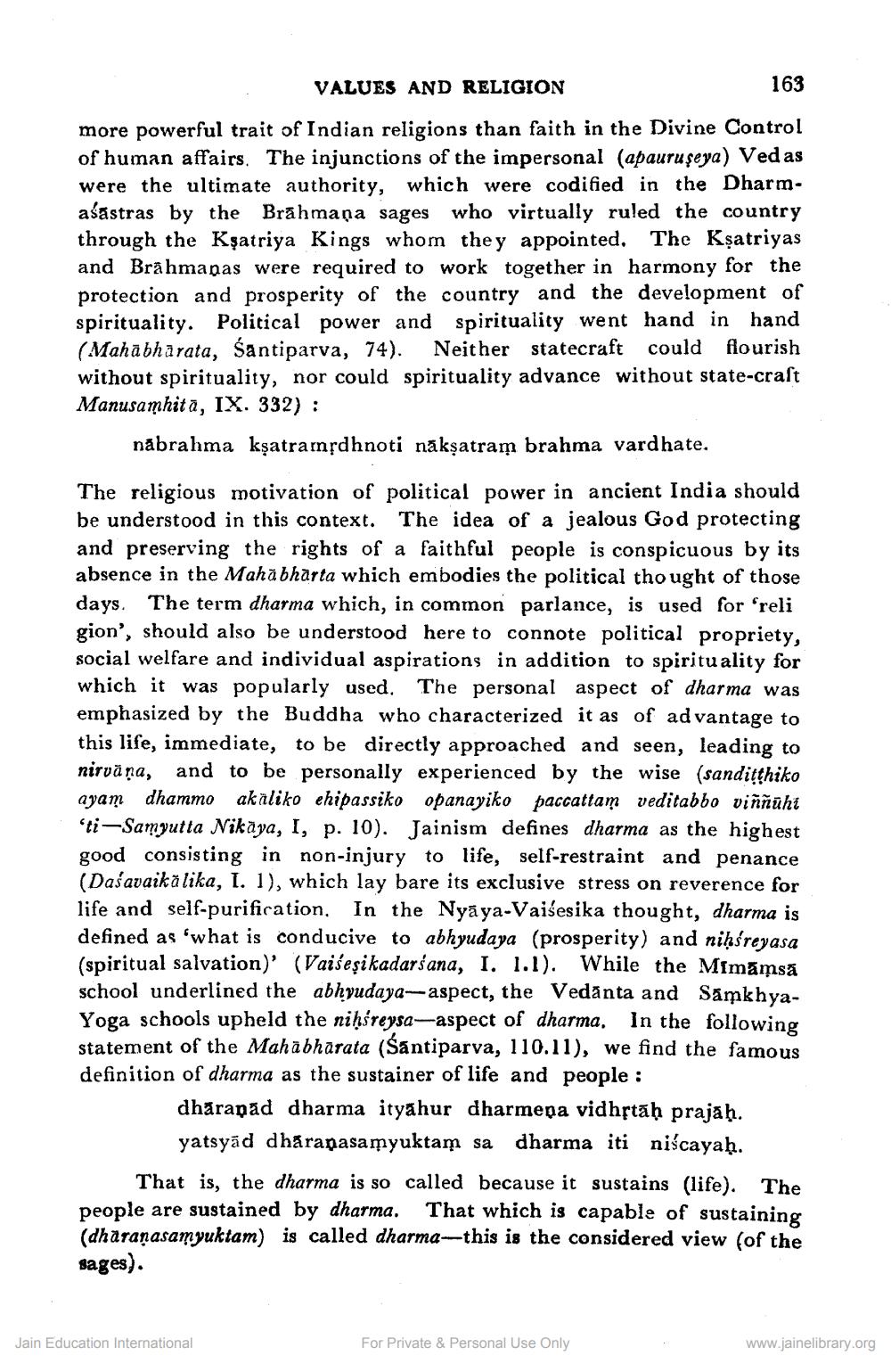________________
VALUES AND RELIGION
more powerful trait of Indian religions than faith in the Divine Control of human affairs. The injunctions of the impersonal (apauruşeya) Vedas were the ultimate authority, which were codified in the Dharmasastras by the Brahmaņa sages who virtually ruled the country through the Ksatriya Kings whom they appointed. The Ksatriyas and Brahmanas were required to work together in harmony for the protection and prosperity of the country and the development of spirituality. Political power and spirituality went hand in hand (Mahabharata, Santiparva, 74). Neither statecraft could flourish without spirituality, nor could spirituality advance without state-craft Manusamhita, IX. 332) :
nābrahma kṣatramṛdhnoti nākṣatram brahma vardhate.
163
The religious motivation of political power in ancient India should be understood in this context. The idea of a jealous God protecting and preserving the rights of a faithful people is conspicuous by its absence in the Mahabharta which embodies the political thought of those days. The term dharma which, in common parlance, is used for 'reli gion', should also be understood here to connote political propriety, social welfare and individual aspirations in addition to spirituality for which it was popularly used. The personal aspect of dharma was emphasized by the Buddha who characterized it as of advantage to this life, immediate, to be directly approached and seen, leading to nirvana, and to be personally experienced by the wise (sandiṭṭhiko ayam dhammo akaliko ehipassiko opanayiko paccattam veditabbo viññuhi 'ti-Samyutta Nikaya, I, p. 10). Jainism defines dharma as the highest good consisting in non-injury to life, self-restraint and penance (Daśavaika lika, I. 1), which lay bare its exclusive stress on reverence for life and self-purification. In the Nyaya-Vaiśesika thought, dharma is defined as 'what is conducive to abhyudaya (prosperity) and niḥśreyasa (spiritual salvation)' (Vaiśeşi kadarsana, I. 1.1). While the Mimāmsā school underlined the abhyudaya-aspect, the Vedanta and SamkhyaYoga schools upheld the niḥśreysa-aspect of dharma, In the following statement of the Mahābhārata (Śāntiparva, 110.11), we find the famous definition of dharma as the sustainer of life and people:
dharaṇad dharma ityahur dharmeņa vidhṛtāḥ prajāḥ. yatsyad dharanasamyuktam sa dharma iti niscayaḥ.
That is, the dharma is so called because it sustains (life). The people are sustained by dharma. That which is capable of sustaining (dharanasamyuktam) is called dharma-this is the considered view (of the sages).
Jain Education International
For Private & Personal Use Only
www.jainelibrary.org




